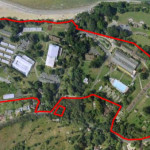Two years into school improvement journey and leader highlights achievements
Ofsted released their Annual Report yesterday (Tuesday) and revealed that despite some great improvements over the last year, the Isle of Wight was bottom of a regional league table for ‘Good’ or ‘Outstanding’ secondary schools.
In response to the news, Isle of Wight Council leader and Executive member for children’s services, Cllr Jonathan Bacon, said,
“This is an annual report from Ofsted and we would not disagree with their comments – although it is important to put them into a little more detailed context, especially in relation to where we are now as opposed to where we were two years ago, and to reflect our ambitions for the Island.
“As we have set out in our corporate plan, our priority is to ‘keep children safe and improve their education’, and despite an ever challenging budget position we have continued to invest in these services.
“It is our intention on the Island for all our children to be attending at least a good school and preferably one that is outstanding. We are two years into a school improvement journey with our Hampshire County Council partners and levels of attainment are improving in many areas – especially early years where we are outstripping the national average, and at the end of primary years where, for example, our reading results outperformed the national average by one percentage point.”
Six per cent improvement
Cllr Bacon was keen to point out that reading, writing and mathematics in primary schools has improved by six per cent over the last two years.
He said,
“Although for the end of primary years measure we are a couple of percentage points behind the national average when it comes to writing and mathematics, it should be underlined that for all three (reading, writing and mathematics) we have improved by six per cent over the last two years.
“However, there will be a big push especially in relation to writing and mathematics over the coming months.”
Significant progress
Compared to two and half years ago, when the Isle of Wight had four secondary schools rated as ‘Inadequate’ by Ofsted, things have greatly improved.
Cllr Bacon added,
“In relation to secondary schools, although there is a long way still to go, we have progressed significantly since two years ago when four were judged as ‘inadequate’. Now we have one secondary school which is still rated as ‘good’ (Christ the King), four which have progressed to ‘requiring improvement’, and one which is yet to receive a rating.
“Typically it takes two years for a school to move out of being rated as ‘inadequate’, so the improvement journey is clearly on track for our secondary schools, although there is much still do to attain the levels we are ultimately seeking.
“It is also important to note that Ofsted will not be re-inspecting some of these schools for possibly another year, and at that stage we will have a more up to date picture of our progress.”
GCSE attainment
In respect of GCSE attainment, the council leader said,
“In relation to attainment at GCSE level, it is important to reiterate that which we have recently stated, which is that for 2015 provisional results Island schools overall are showing a three per cent improvement in the proportion of our pupils achieving five A* to C passes (including English and mathematics). Figures from our schools show that at least 48 per cent of Island pupils achieved this national benchmark measure this year and it is anticipated this will increase with re-marks and appeals.
“It should be emphasised, however, that GCSEs have long been an area of underperformance for the Island – and tackling the problem has been one of the key priorities of our strategic partnership with Hampshire.
“Our individual secondary schools are facing differing challenges in this regard, with both stunning progress and areas of disappointment being reported – but in overall terms there are real signs of sustainable progress and we are determined these will be built upon as a matter of utmost priority as we seek to close the gap with GCSE regional and national averages.”





